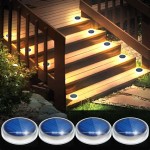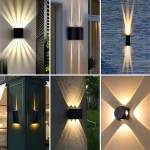Outdoor Residential Lighting: Essential Aspects for Enhancing Your Home's Ambiance
Outdoor lighting plays a crucial role in enhancing the aesthetic appeal, safety, and functionality of your home. By strategically illuminating various areas, you can create an inviting ambiance, improve visibility, and extend the enjoyment of your outdoor spaces into the evening hours. Here are some essential aspects to consider when designing your outdoor residential lighting:
1. Purpose and Functionality
Determine the primary purpose of the lighting. Whether it's for safety, ambiance, or security, understanding the intended function will guide your choices for fixtures, light source, and placement. Consider the areas that need illumination, such as pathways, entrances, patios, and garden features, and choose appropriate lighting solutions.
2. Fixture Selection
Outdoor lighting fixtures come in a wide range of styles and materials. Choose fixtures that complement your home's architectural design and enhance the desired ambiance. Consider durability, weather resistance, and ease of maintenance. Wall-mounted fixtures, bollards, path lights, and hanging lanterns are popular options.
3. Light Source
The type of light source you choose will significantly impact the ambiance and visibility of your outdoor spaces. Incandescent, fluorescent, and LED lights each have their own advantages and considerations. LEDs offer energy efficiency, high light output, and long lifespan, making them a cost-effective and versatile option.
4. Light Placement and Direction
Proper placement and direction of lighting fixtures are crucial for achieving the desired effect. Uplighting can create dramatic accents, while downlighting provides practical illumination. Consider the height and spacing of fixtures to avoid glare and ensure even distribution of light. Shielding or diffusers can help control light spillage and reduce light pollution.
5. Motion Sensors and Timers
Motion sensors and timers can enhance safety and convenience. Motion sensors trigger lights automatically when movement is detected, providing security and illumination when needed. Timers allow you to set specific hours for lighting, which can save energy and create a welcoming ambiance during the evening hours.
6. Energy Efficiency
Consider energy-efficient lighting options to reduce electricity consumption. LED lights are known for their efficiency and long lifespan. Using solar-powered fixtures can further reduce energy costs and promote sustainability.
7. Landscape Lighting
Enhance the beauty of your outdoor landscapes by incorporating landscape lighting. Highlight architectural features, trees, water features, and sculptures. Use soft lighting to create a serene ambiance and bring your garden to life after sunset.
8. Professional Installation
Proper installation is essential for the safety, longevity, and effectiveness of your outdoor lighting system. Consider hiring a licensed electrician to ensure code compliance and professional-grade installation. This will prevent potential hazards and ensure long-term performance.
Conclusion
By incorporating these essential aspects into your outdoor residential lighting plan, you can create a beautiful and functional space that enhances your home's curb appeal, extends its usability, and provides a safe and inviting environment for you and your guests.

Outdoor Home Lighting Installation Wichita Ks Graf Electric

Smart Outdoor Led Lighting Haven

Residential Landscape Lighting Company Georgia Lightscapes

Residential Outdoor Lighting Landscape Design

Outdoor Lighting Ideas For All Around The Home Paramount Landscaping

Title 24 Residential Lighting Technology Center

Stylish Outdoor Lighting Ideas For Home Design Cafe

The Best Outdoor Lighting For Your Home

Residential Outdoor Lighting Nightvision Home Design Exterior

Illuminate Your Home S Facade With Outdoor Soffit Lighting In St Louis







